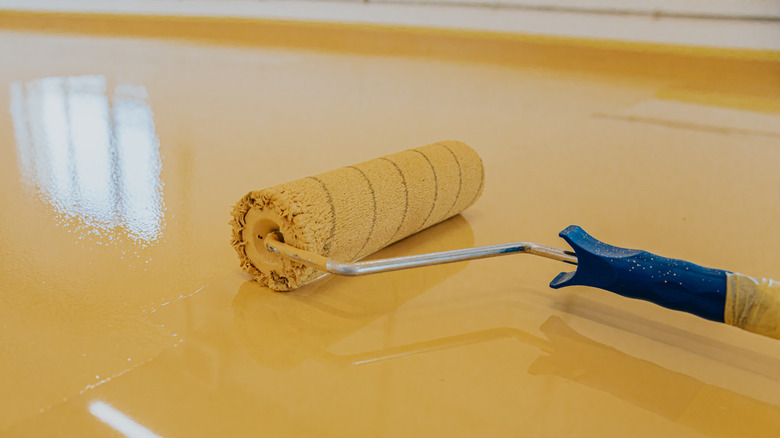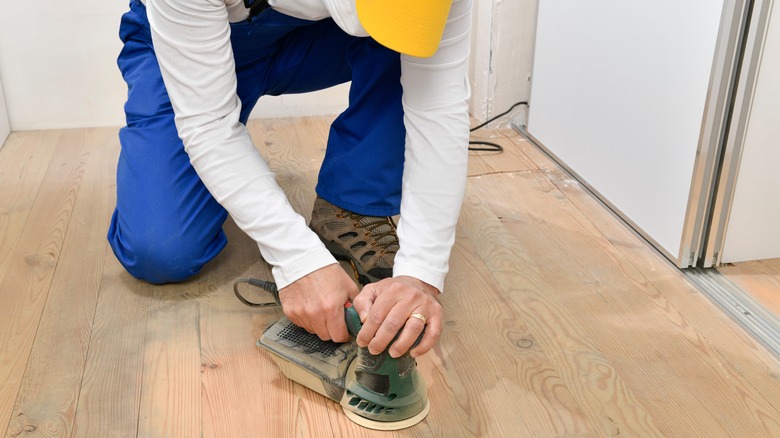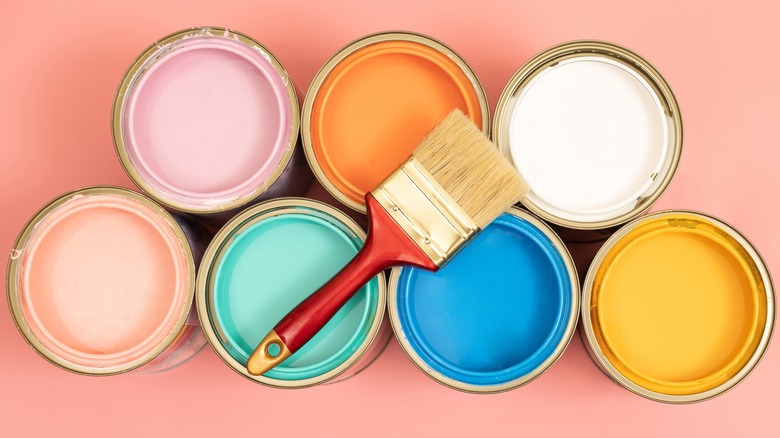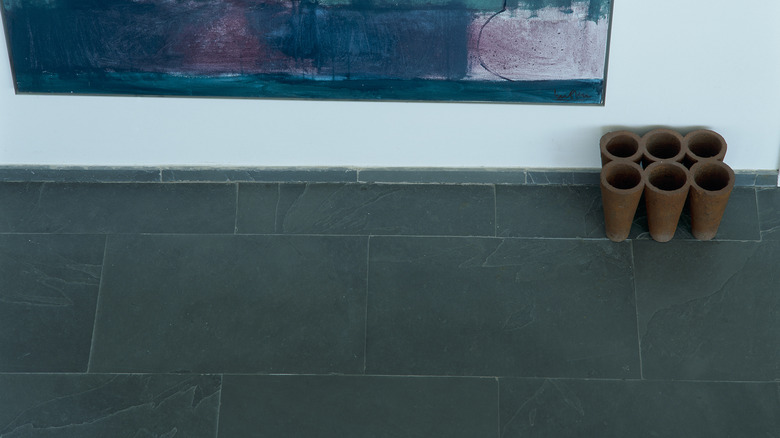Everything You Need To Know Before Painting Your Floors
When was the last time you paid attention to your floors? In most homes, they tend to blend in, creating a base for all other design aspects of the room. Just because floors are traditionally neutral doesn't mean yours have to be. As maximalism and eclectic aesthetics are becoming more on-trend, homeowners are looking for new ways to incorporate pops of color into their homes.
One possible solution? Paint your floors. A fresh coat of paint can breathe new life into a space and add something unexpected to the design. If you want to give your kitchen a new look, don't be afraid to paint your linoleum or tiles. Think your garage should be more colorful? Concrete can take paint well, too. Painting wood floors can be a cost-effective cosmetic upgrade, but before you run out and buy a few gallons of paint, there are a few things to note. Here's what you should know before painting your floors.
You've Got to Do Prep Work
Don't be so hasty to pick up a paintbrush. Before you do any painting, you have to do the prep work. Most wood floors are finished with a stain or polyurethane, so you will have to sand that layer away. Use 100-grit sandpaper to remove any previous stain or paint. Renting a sander from a hardware store can prevent you from being on your hands and knees for hours (via Insider). Once you've finished sanding, you'll want to ensure a clean, smooth surface to paint on.
Take care to sweep and use a damp cloth to remove any wood dust. The process of prepping to paint concrete is similar. Be sure your concrete doesn't have sealers or coaters. But unlike wood, concrete should have a textured surface. So you may need your concrete to be mechanically abraded so the paint can stick to the surface (via Concrete Network). The process for preparing tile floors to paint is similar to wood floors. Be sure to sand them and thoroughly clean them of any dust before painting. Next, you'll want to prime your floors to ensure the paint will adhere to the surface. Be sure to choose a primer for the surface you're looking to paint. Once the primer dries, you're ready for your first coat.
Ventilate Your Space
You need a well-ventilated space. Without it, you run the risk of becoming sick from the paint vapors. It's best to keep your windows as wide as possible while painting for two to three days afterward (via Consumer Product Safety Commission). The CPSC also recommends protecting yourself by taking painting breaks to get fresh air. Staying out of a room with fresh paint for two or three days can reduce exposure to potentially toxic chemicals (via Real Simple).
It's also important to protect yourself and others while painting. Wear a paint respirator or mask and keep young children and individuals with breathing problems away from the painting area. Adding fans can also help the air circulate inside the room. However, be cautious about leaving the window open. You don't want dust or debris coming through and potentially ruining any progress. Windows screens can help keep some of the debris outside. If your windows don't have screens, try opening windows and doors in nearby rooms. Taking the necessary precautions means your room won't only be stylish but safe to live in too.
Choosing the Right Paint
Choosing the right paint isn't only about picking out a stylish color–although that is a big part of the decision. But if you don't want to spend every waking moment filling in scuff marks, you have to choose the right paint formula. Unlike wall paint, you'll want a more durable formula that can stand up to all the activity your floors take daily. Epoxy paint is a resilient option. It's resistant to water and heat, making it an excellent choice for kitchens and bathrooms (via MyMove). Epoxy paint is often the best choice for concrete flooring, so use it in the garage too.
For wood floors, many paint companies have created a floor enamel formula that's more durable but offers the same colors as the rest of their paint line. These are easy to find in most hardware stores, so the cost-conscious homeowner often prefers them. Another option is marine paint because it's made to withstand wear and tear from water and outdoor weather conditions (via Apartment Therapy). When painted inside away from inclement weather, marine paints require less upkeep and maintenance. You can feel confident walking across your floors, spilling a drink, or moving furniture without fearing you'll ruin the paint.
Make Your Painted Floors Last
No one wants to put in all the work of painting their floors, only for them to chip or scrape a few days later. The good news is that painting floors can last you a couple of years. But the trick is getting the whole process right. Consider the traffic in the room. Light paint colors, especially white, can show every ounce of dirt and every scuff mark.
For rooms like hallways and living rooms, darker paint might be best. High humidity and excess moisture can also cause paint to chip. Bathrooms may require an extra coating to seal the paint, and you will need to be vigilant about wiping up any puddles. However, experts still warn that painting floor tiles won't always result in a perfect outcome, and homeowners should temper their expectations (via Better Homes & Gardens). For tiles, it's even more important to prep the surface, or else the paint can chip right off. Once you've painted your floors, you shouldn't feel like you have to walk on eggshells to get through your home. But knowing how to make painted floors last and how to maintain them will allow you to enjoy them for years to come.




